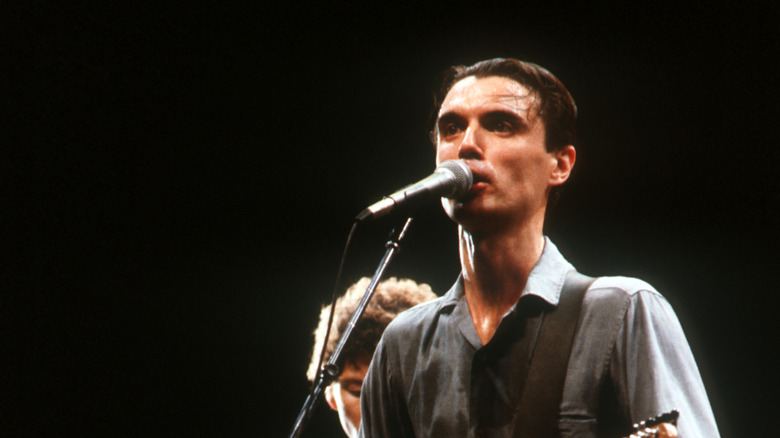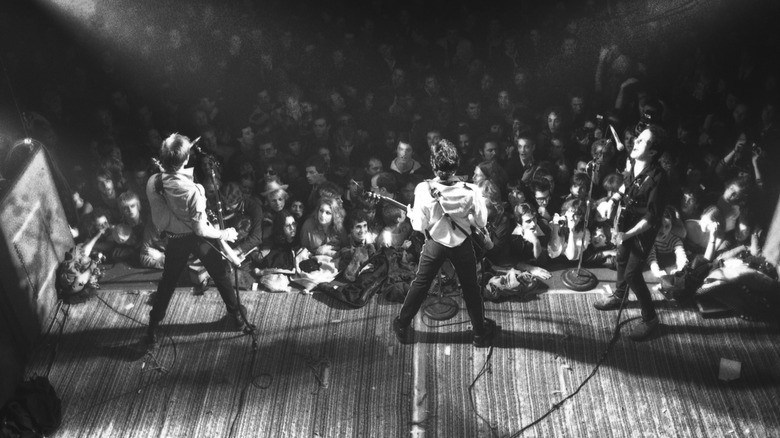5 Rock Songs From 1979 That Sound Even Cooler Today
The rock music scene of 1979 had experienced a lot of recent turbulence. The punk explosion that had come about in the preceding three years had utterly transformed the face of rock, bringing things back to basics after a decade of growing ambition and indulgence. In its wake, a raft of exciting new wave artists emerged, with a renewed sense that the genre was capable of anything, and, what's more, anyone had a chance to be a rock star as long as they could offer the authenticity or swagger to pull it off.
At the same time, more established artists were reacting to the new musical landscape, continuing to add to discographies that had their origins back in the heady days of the 1960s with new modern sounds that, in many cases, continue to stand the test of time. Here are five rock classics that sound cooler today than they did back then.
Blondie – 'Dreaming'
Debbie Harry was one of the defining figures of the late 1970s, with her band Blondie gaining worldwide success thanks to a slew of popular releases. Originally emerging from the New York punk scene, the band's 1978 studio album "Parallel Lines" and No. 1 single "Heart of Glass" made Blondie a new wave sensation, and 1979 saw the band looking to build on this success.
Immediately back in the studio, the band recorded its fourth album, "Eat to the Beat," which contained the track that was to be Blondie's next single, "Dreaming," a paean to the romantic relationship between Harry and her guitarist, Chris Stein. Characterized by exceptionally driving drums, a catchy guitar part, and a suitably snappy delivery from Harry, it feels like a heavier version of ABBA's "Dancing Queen," a similarity the band's members have admitted.
Commercially, "Dreaming" failed to replicate the success of "Heart of Glass," peaking at No. 27 on the Billboard Hot 100, though it did hit No. 2 in the U.K. However, it is now considered among Blondie's best songs, and lays the groundwork for its huge success in 1981 with "Call Me" (which, incidentally, was almost given to Stevie Nicks).
The Clash – 'London Calling'
While 1979 was in many ways a transitional year for Blondie, for other acts it was to be a huge creative and commercial peak. London punk band The Clash had for several years enjoyed considerable success in the U.K., but had yet to break into the American market. Their first American tour took place early that year, though their latest studio album, "Give 'Em Enough Rope," failed to make much of a splash, peaking at No. 128 on the Billboard album chart.
But later that year, the band went on to release its magnum opus, "London Calling," a sprawling double album that took The Clash from their punk roots to embrace an eclectic range of music genres, resulting in some of the most attention-grabbing music of the band's career.
The album's opener and title track, in particular, has aged exceptionally well down the years. "London Calling" is an apocalyptic post-punk anthem that still has the power to compel listeners with its images of the capital engulfed in an ice age and inhabited by zombies. Its lyrics are reflected in the music, with a bassline that's infectious and danceable despite its heaviness.
Talking Heads – 'Life During Wartime'
Talking Heads was one of the most unexpected rock sensations of 1979, a strange new wave act that was just beginning to fulfill the artistic vision of its members, led by frontman David Byrne. With legendary producer Brian Eno brought in to produce, Talking Heads released "Fear of Music," the band's third album, which was arguably its first masterpiece. The album's lead single, "Life During Wartime," demonstrates everything that was great about the group at that point.
Funky but taut, playful but paranoid, it features infectious, metallic keys and a staccato performance from Byrne and a driving, hypnotic rhythm that together reflect the song's meaning perfectly. Like "London Calling," "Life During Wartime" creates a dystopian vista where life carries on regardless — indeed, the single, which peaked at No. 80 on the Billboard 200, is reflective of a new embrace of fantastical narratives in Byrne's lyricism. The song remains utterly thrilling and is often described as one of the highlights of the Talking Heads discography. The version from the legendary Talking Heads concert movie "Stop Making Sense" is especially enjoyable.
Tom Petty & The Heartbreakers – 'Don't Do Me Like That'
In many ways, the inheritor of the lyrically-charged rock sound pioneered by The Rolling Stones and Neil Young more than a decade earlier, Tom Petty and his band The Heartbreakers differentiated themselves from the punk groups that emerged at around the same time with their intentionally backwards-looking brand of songwriting that leaned heavily into the well-established traditions of rock 'n' roll. And whereas other artists may have embraced lo-fi and DIY recording techniques and aesthetics around this time, Petty went the other way, delivering shimmering, flawless rock characterized by big guitar sounds and driving drums that could fill stadiums.
1979's "Don't Do Me Like That," a single that reached the top 10 of the Billboard Hot 100, shows the success of this approach. With Petty and the band's Dylan-esque, boogie-ish keys and tasty guitar licks, the track is a transcendent slice of R&B-infused classic rock that seems to predict the sound of rock bands of the 1980s. It was followed up later in 1979 by another classic release, "Refugee," which hit No. 15, and the singles helped to buoy their parent album, "Damn the Torpedoes," to triple-platinum status in the U.S.
Pink Floyd – 'Another Brick in the Wall (Part 2)'
The British rock band Pink Floyd had already gone through several transformations by 1979. Having lost their original leader Syd Barrett to mental illness as early as 1968, the band increasingly fell in line with the vision of bassist Roger Waters, whose songwriting was accompanied by huge concepts that underpinned each album cycle. Arguably, the most successful iteration of this approach came in 1979, when Pink Floyd released the smash hit double album "The Wall."
An ambitious concept album about the psychological prison experienced by a young male character named Pink Floyd, the album deals with totalitarianism and fascism, Kafka-esque nightmares, and inner turmoil, but also typically rocks hard as it does so, as demonstrated by the album's biggest single, "Another Brick in the Wall (Part 2)."
A No. 1 hit for around a month in the U.S., the song also topped the charts in several other countries. It is a strange beast featuring both an infectious disco beat — not exactly what Pink Floyd was known for previously — and a children's choir, which bellows the famous refrain "Hey! Teacher! Leave us kids alone!" Meanwhile, the solo from guitarist Dave Gilmour has gone down in history as one of Pink Floyd's finest, adding to the sense of the song's epic-ness. The song has lost none of its anti-authoritarian swagger and continues to be an anthem of teenage rebellion today.
Choosing these songs
To begin with, it is important to acknowledge that rock music is an incredibly large and diverse musical genre. While many music fans think of "classic rock" when they hear the words "rock music," the fact is that new wave, post punk, art rock, and much more are all facets of the wider rock music landscape.
This list, then, is an attempt to give as wide a view as possible of the rock classics released in 1979 that reveal the genre in all its diverse glory, revealing the sub-genres that have managed in many cases to grow old gracefully in the near half-century since they first appeared. As well as continuing to find millions of listeners in the streaming age, each of these songs has retained their retrospective critical acclaim up to the present day, revealing their timelessness and arguably makes them even cooler than if they were just released yesterday.

